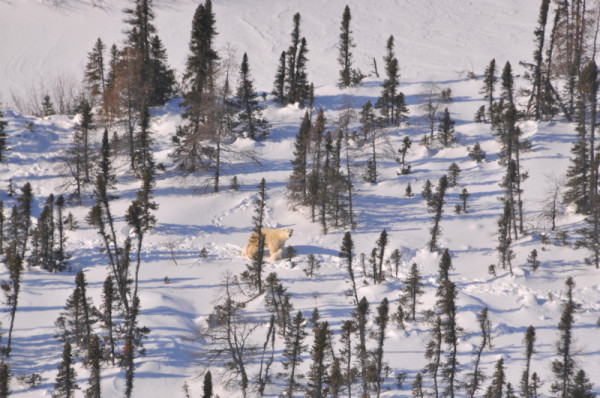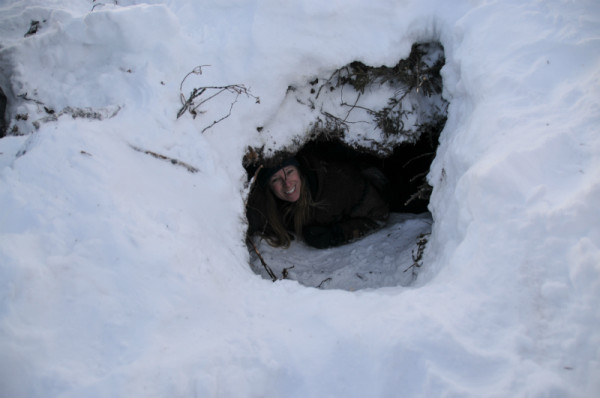New polar bear mothers enjoy spring as much as the rest of us
There aren’t many signs of spring that evoke images of polar bears, but for Daryll Hedman, Regional Wildlife Manager for the Government of Manitoba, seeing mother bears emerge from their dens each year with one or two cubs in tow is as good as daffodils popping up in the front garden.
Hedman is in charge of a WWF-sponsored polar bear denning survey in northern Manitoba, southeast of Wapusk National Park. Every February and March he flies by helicopter looking for the dens that serve as shelter for pregnant and nursing polar bears over the harsh northern winter. This winter as many as 30 female polar bears built dens in the survey area that stretches from the Nelson River all the way to the Ontario border.
Hedman says it’s important to keep track of the number of bears in the region, especially since the Western Hudson Bay population of approximately 1,030 bears is one of the most southerly populations in the world. Population numbers are currently considered to be stable.
“They’re interesting to study because the habitat is different here than it is for bears in the Beaufort region,” he says. “Bears farther north will build their dens in the snow, but down here they dig mostly into theses peat plateaus, what we call palsa.”
Hedman works with partners from the resource management boards for the Fox Lake Cree and York Factory First Nations. Beginning in February when the bears first emerge, they fly low near the coastlines, looking for tracks leading out to the sea ice where bears have gone looking for food.
“As soon as we see tracks, we take a sharp turn and follow them inland until we find the dens,” he says.
“It’s surprising how far inland they go, as far as 70 miles we’ve seen. For a 300-kilogram polar bear, that takes a tremendous amount of effort.”
The reason for venturing so far from the coast is likely to protect their vulnerable cubs from hungry wolves. Hedman says he saw evidence of at least one cub that didn’t make it during this year’s survey. “We came across an area where there had obviously been a fight. You could see two sets of tracks—mother and one cub—leading towards the area, and only the mother’s tracks leading away,” he says. “It’s sad, but it happens.”
By mid-March, activity really starts to pick up as the polar bears leave the dens with their young and begin their journey out onto the sea ice in Hudson Bay. Once they’ve left the area, Hedman and his team get the opportunity to explore the dens and their surroundings without disturbing the bears. He says they’re always surprised by what they find.
“They’re small,” he says, referring to the dens. “They’re a lot smaller than you’d think,” he notes that sometimes it seems even the mother bears find them to be a tight squeeze. “Often you’ll see she’s dug an extra room or a shelf where she keeps the cubs to get some extra space.” He adds with a chuckle: “And who can blame her?”
Another familiar behaviour that comes with winter’s end is the need to get out and explore the area, to give the cooped up cubs some room to run around.
“They take these little trips once the weather breaks,” says Hedman. “The mother will build a temporary den, usually just a one-by-one foot hole, and the mother sleeps on top of it.”
Hedman says it’s nice to see the activity spring brings to the region, especially after a winter where temperatures routinely dropped to -50 degrees Celsius with the wind chill. “I’d come home some days in January and tell my wife we couldn’t find anything, not a single track,” he says. “She’d just look at me and say ‘Of course you didn’t. What mother in her right mind would take her baby out in -50 degrees?’ I suppose she’s got a point.”



